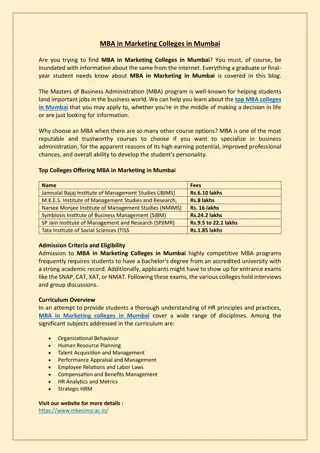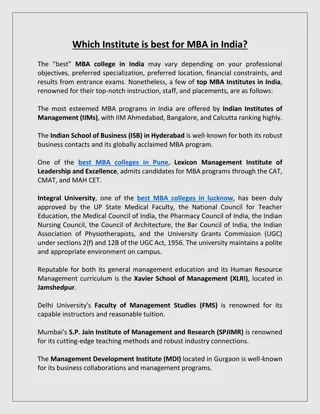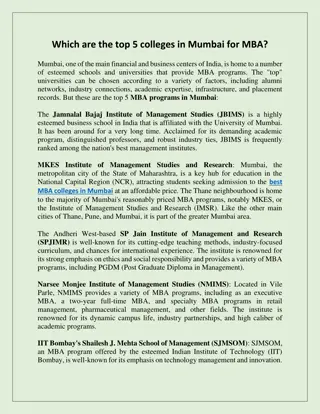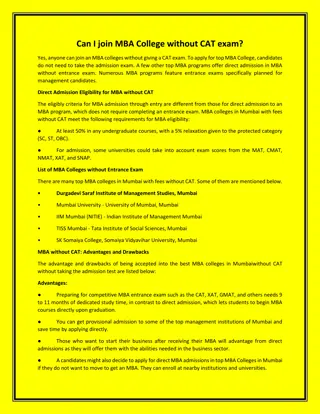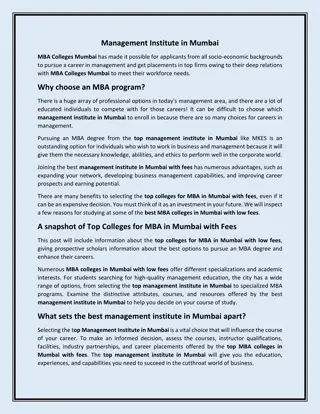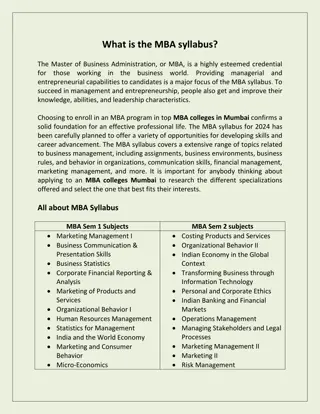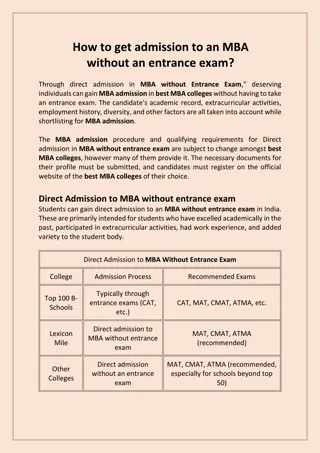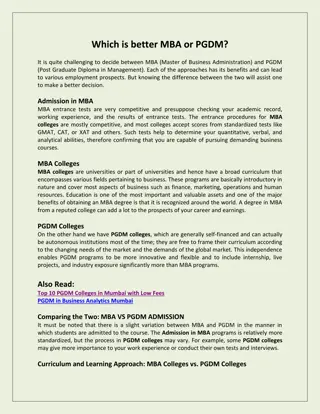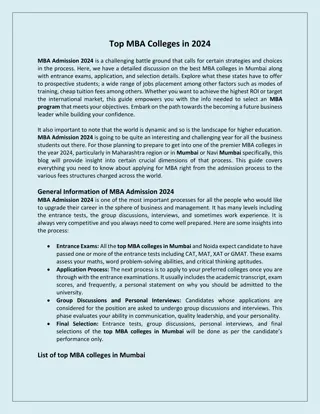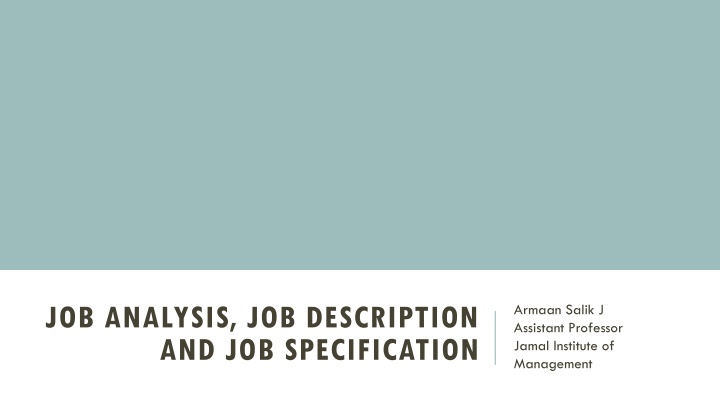
Job Analysis, Description, and Specification in Management Roles
Explore the concepts of job analysis, job description, and job specification in the context of organizational management. Learn how these processes help in identifying job requirements, duties, and essential skills. Discover the scope and uses of job analysis in achieving organizational goals and improving operational efficiency.
Download Presentation

Please find below an Image/Link to download the presentation.
The content on the website is provided AS IS for your information and personal use only. It may not be sold, licensed, or shared on other websites without obtaining consent from the author. If you encounter any issues during the download, it is possible that the publisher has removed the file from their server.
You are allowed to download the files provided on this website for personal or commercial use, subject to the condition that they are used lawfully. All files are the property of their respective owners.
The content on the website is provided AS IS for your information and personal use only. It may not be sold, licensed, or shared on other websites without obtaining consent from the author.
E N D
Presentation Transcript
JOB ANALYSIS, JOB DESCRIPTION AND JOB SPECIFICATION Armaan Salik J Assistant Professor Jamal Institute of Management
DEFINITIONS According to Michael L. Jucius, Job analysis refers to the process of studying the operations, duties and organizational aspects of jobs in order to derive specifications or as they called by some, job descriptions. According to DeCenzo and P. Robbins, A job analysis is a systematic exploration of the activities within a job. It is a basic technical procedure, one that is used to define the duties, responsibilities, and accountabilities of a job. According to Herbert G Herman A job is a collection of tasks that can be performed by a single employee to contribute to the production of some product or service provided by the organization. Each job has certain ability requirements (as well as certain rewards) associated with it. Job analysis process used to identify these requirements.
WHAT IS A JOB ANALYSIS? A job analysis is a series of activities that help to identify the different requirements for a particular position. This includes reviewing the tasks that people perform in a job, the tools they use and the methods they use to fulfil their duties. A job analysis often produces a list of information and qualities about a particular role to help managers understand how they might meet the changing needs of a business
SCOPE OF JOB ANALYSIS Identification: These analyses often include basic job identification information, like job numbers and any company-specific codes associated with it. Characteristics: This includes the basic characteristics of a job, like where a candidate might work globally and their specific office location. Duties: This includes the specific duties that an employee performs for a job. It often includes the tasks they complete towards reaching goals, like calling customers or creating marketing materials. Tools: This includes the systems and tools an employee needs to complete their jobs. You might see physical equipment, like computers or software programs. Methods: Methods include the processes and workflows that an employee follows to complete their tasks. Traits: Traits are the skills and personality traits that an employee has that help them fulfil their duties. Relationships: Relationships include how an employee might work with other people to complete their tasks. This can include managerial approval or collaboration with other teams.
USES OF JOB ANALYSIS 1. Achievement of Goals: Weather and Davis have stated, Jobs are at the core of every organization s productivity, if they are designed well and done right, the organization makes progress towards its objectives. Otherwise, productivity suffers, profits fall, and the organization is less able to meet the demands of society, customer, employees, and other with a stake in its success. 2. Organizational Design: Job analysis will be useful in classifying the jobs and the interrelationships among the jobs. On the basis of information obtained through job analysis, sound decisions regarding hierarchical positions and functional differentiation can be taken and this will improve operational efficiency. 3. Organization and Manpower Planning: It is helpful in organization planning, for it defines labour in concrete terms and co-ordinates the activities of the work force, and clearly divides duties and responsibilities. 4. Recruitment and Selection: Job analysis provides you with information on what the job entails and what human requirements are required to carry out these activities. This information is the basis on which you decide what sort of people to recruit and hire.
USES OF JOB ANALYSIS 5. Placement and Orientation: Job analysis helps in matching the job requirements with the abilities, interests and aptitudes of people. Jobs will be assigned to persons on the basis of suitability for the job. The orientation programme will help the employee in learning the activities and understanding duties that are required to perform a given job more effectively. 6. Employee Training and Management Development: Job analysis provides the necessary information to the management of training and development programmes. It helps in to determine the content and subject matter of in training courses. It also helps in checking application information, interviewing test results and in checking references. 7. Job Evaluation and Compensation: Job evaluation is the process of determining the relative worth of different jobs in an organization with a view to link compensation, both basic and supplementary, with the worth of the jobs. The worth of a job is determined on the basis of job characteristics and job holder characteristics. Job analysis provides both in the forms of job description and job specification.
USES OF JOB ANALYSIS 8. employee s actual performance with his or her desired performance. Through job analysis industrial engineers and other experts determine standards to be achieved and specific activities to be performed. Performance Appraisal: Performance appraisal involves comparing each 9. Health and Safety: It provides an opportunity for identifying hazardous conditions and unhealthy environmental factors so that corrective measures may be taken to minimize and avoid the possibility of accidents. 10. Employee Counselling: Job analysis provides information about career choices and personal limitation. Such information is helpful in vocational guidance and rehabilitation counselling. Employees who are unable to cope with the hazards and demands of given jobs may be advised to opt for subsidiary jobs or to seek premature retirement.
STEPS IN JOB ANALYSIS 1.Determine Use of Job Analysis Information Identify the purpose (e.g., recruitment, compensation) to guide data collection and methods. 2.Collection of Background Information Review organization charts, class specifications, and existing job descriptions to understand job context and requirements. 3.Selection of Jobs for Analysis Choose representative jobs based on changes, requests, or regular review cycles (e.g., every 3 years). 4.Collection of Job Analysis Data Gather data from employees, supervisors, or external analysts by observing duties, tasks, and required skills. 5.Processing the Information Organize data to determine the level of detail needed and whether quantitative measures are applicable. 6.Preparing Job Descriptions Create detailed statements of job duties and responsibilities, compiled from collected information. 7.Developing Job Specifications Define minimum qualifications, skills, and experience required for the job to guide hiring decisions.
JOB DESCRIPTION Flippo has Defined Job Description as, A job description is an organized, factual statement of duties and responsibilities of a specific job. In brief, it should tell what is to be done. How it is done why. It is a standard of function, in that defines the appropriate and authorized content of a job. According to Pigors and Myres, Job description is a pertinent picture (in writing) of the organizational relationships, responsibilities and specific duties that constitutes a given job or position. It defines a scope of responsibility and continuing work assignments that are sufficiently different form that of other jobs to warrant a specific title.
WRITING JOB DESCRIPTION 1. Job Identification: It includes the job title, alterative title, department, division, plant and code number of the job. The job title identifies and designates the job properly, the department, division, etc., indicate the name of the department where it is situated whether it is the maintenance department, mechanical shop etc. Location gives the name of the place. This portion of job description gives answer to two important questions: to what higher level job is this job accountable. And who is supervised directly? 2. Job Summary: Job summary describes the contents of the jobs in terms of activities or tasks performed. Job summary should clear the nature of the job. Primary, secondary and other duties to be performed on the job should clearly be indicated separately. 3. Duties and Responsibilities: This is the most important phase of job description and should be prepared very carefully. It describes the duties to be performed along with frequency of each major duty. Responsibilities concerning custody of money, supervision and training of staff etc. are also described in this part.
WRITING JOB DESCRIPTION 4. Supervision: Under it is given number of persons to be supervised along with their job titles, and the extent of supervision involved general, intermediate or close supervision. 5. Relation to Other Jobs: It describes the vertical and horizontal relationships of work flow. It also indicates to whom the jobholder will report and who will report to him. It gives an idea of channels of promotion. 6. Machine, tools and equipment define each major type or trade name of the machines and tools and the raw materials used. 7. Working Conditions: The working environment in terms of heat, light, noise, dust and fumes etc, the job hazards and possibility of their occurrence and working conditions should also be described. It will be helpful in job evaluation. 8. Social Environment: It specifies the social conditions under which the work will be performed. In this part the size of work group, interpersonal interactions required to perform the job and development facilities are mentioned
JOB SPECIFICATION According to Dale Yoder, The job specification, as such a summary properly described is thus a specialized job description, emphasizing personnel requirement and designed especially to facilitate selection and placement. Flippo has defined job specification as, Job specification is a statement of the minimum acceptable human qualities necessary to perform a job properly. It is a standard of personnel and designates the qualities required for acceptable performance.
A JOB SPECIFICATION SHOULD INCLUDE: (i) Physical characteristics, which include health, strength, endurance, age, height, weight, vision, voice, eye, hand and foot co-ordination, motor co-ordination, and colour discrimination. (ii) Psychological and social characteristics such as emotional stability, flexibility, decision making ability, analytical view, mental ability, pleasing manners, initiative, conversational ability etc. (iii) Mental Characteristics such as general intelligence, memory, judgement, ability to concentrate, foresight etc. (iv) Personal Characteristics such as sex, education, family background, job experience, hobbies, extracurricular activities etc.
ALL THESE CHARACTERISTICS MUST BE CLASSIFIED INTO THREE CATEGORIES Essential attributes which a person must possess. Desirable attributes which a person ought to posses. Contra indicators which will become a handicap to successful job performance.
SUMMARY The purpose of an organization is to give each person a separate distinct job and to ensure that these jobs are coordinated in such a way that the organization accomplishes its goals. Developing an organization structure results in jobs that have to be staffed. Job analysis is the procedure through which you find out: (1) what the job entails, and (2) what kinds of people should be hired for the job. It involves six steps: (1) determine the use of the job analysis information; (2) collection of background information; (3) selection of jobs for analysis; (4) collection of job analysis data; (5) processing the information; (6) preparing job descriptions and job classifications; and (7) developing job specifications. Techniques of job analysis are observation method, questionnaires, participant diary/logs, interview, critical incidents, technical conference method, and job performance. Job description and job specification are products of job analysis. Job description should indicate: duties to be performed by the job holder and the manner he should complete the tasks. Job specification: answer the question what human traits and experience are necessary to do the job. It portrays what kind of person to recruit and for what qualities that person should be tested .


